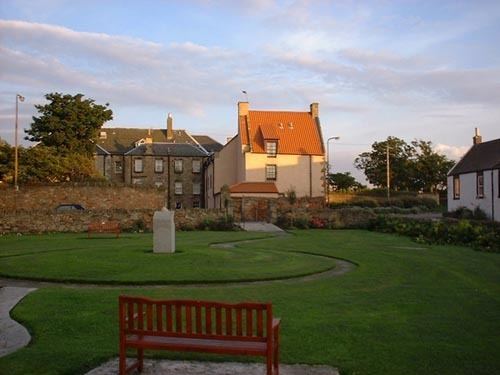OS grid reference NT399755 Local time Wednesday 6:04 AM Civil parish Tranent | Sovereign state United Kingdom Postcode district EH32 Dialling code 01875 | |
 | ||
Weather 6°C, Wind SW at 18 km/h, 90% Humidity | ||
Cockenzie and Port Seton (Scots: Cockennie [koˈkɪni]; Scottish Gaelic: Cùil Choinnich, meaning "cove of Kenneth") is a unified town in East Lothian, Scotland. It is on the coast of the Firth of Forth, four miles north-east of Musselburgh. The burgh of Cockenzie was created in 1591 by James VI of Scotland. Port Seton harbour was built by George Seton, 11th Lord Seton between 1655 and 1665.
Contents
- Map of Cockenzie Prestonpans UK
- Power station
- Fishing
- Tourism
- Transport
- Churches
- Leisure
- Notable people
- References
Map of Cockenzie, Prestonpans, UK
The town has a population of 4,493 as of 2001. Since the last Census in 2001, there have been many new houses built. The population is now about 5,460. Cockenzie and Port Seton has continued to grow over the years and is now a dormitory town for Scotland's capital city, Edinburgh.
Power station
To the west of the town, between Cockenzie and Prestonpans is the site of Cockenzie power station, a large coal-fired power station which was a major employer from the 1960s until it closed in 2013, and enabled the town to survive and prosper. Demolition of the plant is currently underway, and is expected to take around 18 months. Plans for an Energy Park on the site, to be used for the construction and repair of wind turbines, were scrapped in March 2015.
Fishing
Cockenzie and Port Seton has grown from what were initially two small fishing villages. The older parts of the town, between the two harbours, retain a more traditional feel and look, similar to many other small fishing villages on the east coast of Scotland. Although the fishing industry has declined in recent years the harbour at Port Seton still retains a small fleet of vessels, mainly fishing for prawns. In the past Cockenzie was also involved in the salt making and coal mining industries.
Tourism
To the east of Port Seton there is a large caravan campsite/holiday park at Seton Sands. The promenade area and the creation of a coastal walk, a part of the John Muir Way, have improved the environment in recent years.
To the south east is Seton Collegiate Church, a collegiate church also known as Seton Chapel, an Ancient Monument in the care of Historic Scotland. Next to it was Seton Palace, now Seton House.
Transport
Cockenzie and Port Seton are served by direct bus links to and from Edinburgh, Prestonpans and Musselburgh, services operated by Lothian Buses (routes 26 and X26). The nearest railway station is at Prestonpans.
Churches
Cockenzie and Port Seton have several churches of different denominations, including:
Leisure
In 2006, Cockenzie and Port Seton along with the neighbouring towns of Prestonpans and Longniddry were twinned with the town of Barga, Tuscany, Italy.
In 2005, The 3 Harbours Arts Festival was inaugurated by Cockenzie, Port Seton and Prestonpans. It takes place in early June.
The town has a community centre with activities such as a youth club, football pitches and a skatepark within the grounds.
